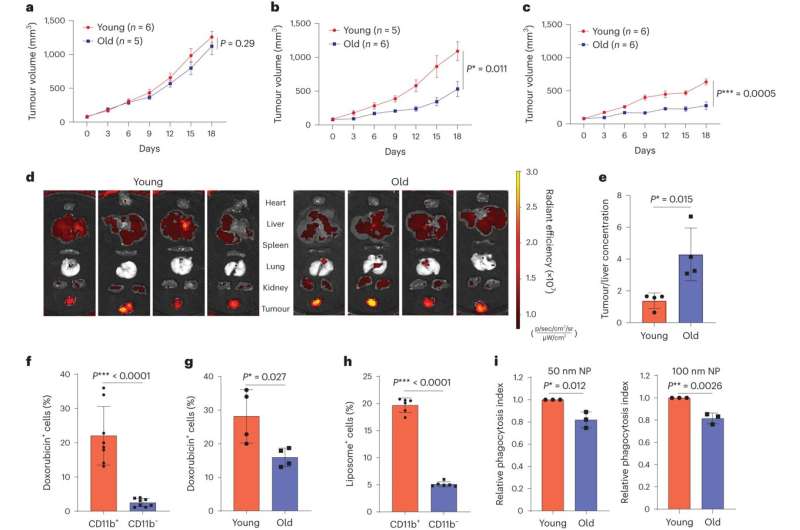Researchers at The University of Texas MD Anderson Cancer Center have discovered that certain nano-based cancer therapies may be less effective in younger patients, highlighting the need for further investigation into the impact of aging on the body’s ability to respond to treatment.
The researchers found age-related differences are due to how effectively the liver filters the bloodstream. Younger livers are more efficient at this process, which helps limit toxins in the blood but also filters out beneficial treatments, potentially rendering them ineffective.
The study, published Sept. 18 in Nature Nanotechnology, was led by Wen Jiang, M.D., Ph.D., associate professor of Radiation Oncology, and Betty Kim, M.D., Ph.D., professor of Neurosurgery.
“Put simply, our liver is designed to protect us, but for young people it might also be protecting them in a way that limits the effectiveness of nanotherapies,” Jiang said.
“There’s so much interest right now in nano-scale delivery systems and designs, but nobody has really considered how age plays a role in the effectiveness of these systems. In preclinical models, younger livers actually work so well that they filter out a significant amount of the nanomedicine. That means, in some cases, these drugs may be less effective in younger patients than in older ones.”
Unlike traditional cancer therapies, in which medicine is directly introduced to the body, nanomedicines use nano-scale carriers to deliver treatments. Some of the advantages of nanomedicine formulations can include reduced toxicity, increased target specificity and increased dosage, depending on the goal of the treatment.
To date, more than 50 nano-based therapies have been approved by the Food and Drug Administration, including 19 currently listed by the National Cancer Institute for use in cancer. The study treatment was nanoparticle-albumin-bound paclitaxel, which has been used since 2005 for certain refractory or relapsed cancers.
Scientists do not fully understand all the mechanisms for how, exactly, the liver filters the bloodstream, but previous studies have indicated a correlation between the rate of clearance and the expression of the scavenger receptor MARCO. This protein is expressed more in younger Kupfer cells, the immune cells that reside in the liver.
After confirming the disparity in results between young and old models, the team investigated therapeutic blockade of MARCO as a possible strategy to avoid drug clearance. Blocking MARCO reduced the uptake of the nanomedicine and improved the drug’s antitumor effects from the cancer therapeutics, but only in the younger models.
“This is just one example, but these results show that there may not always be a one-size-fits-all drug delivery strategy that is effective across diverse patient populations, and that personalized design is warranted in future nanomedicines,” Jiang said. “Hopefully, this study also opens the door for more thorough investigation of the clearance process and how to overcome it.”
Jiang emphasized that while this study focuses on cancer, it examines a potential hurdle for any nanodrug delivery system. There are different proteins, antibodies and viruses with unique clearance mechanisms, but it all comes down to the liver, he explained.


